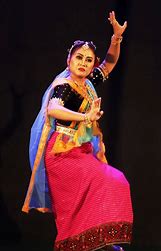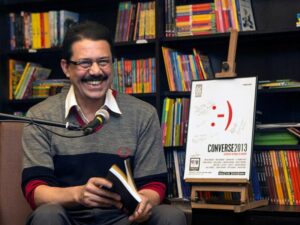Manipuri dance, one of India’s eight classical dance forms, is a graceful art that embodies the spirit of devotion, rhythm, and storytelling. Deeply rooted in the traditions of Manipur, this classical form is not just an artistic performance but also a cultural expression of the Meitei community and other indigenous tribes of the region. Among the many artists who have dedicated their lives to preserving and promoting this heritage, Ningthoujam Bidyapati stands out as a beacon of excellence. Known for her unparalleled contributions to Manipuri dance, she has inspired generations with her talent, discipline, and passion.
In this blog, we delve into the life, career, and enduring impact of Ningthoujam Bidyapati – an acclaimed Manipuri dancer whose name is etched in the annals of Indian classical dance history.
Early Life and Introduction to Dance
Ningthoujam Bidyapati was born in the culturally vibrant state of Manipur, where dance and music are interwoven with the rhythm of daily life. From a young age, she was exposed to the traditional art forms of her homeland. Her early fascination with the movements, expressions, and mythological themes of Manipuri dance gradually evolved into a deep-seated passion.
Encouraged by her family and mentors, Bidyapati began formal training under some of the most respected gurus of Manipuri classical dance. She learned the intricate techniques of Ras Leela, Lai Haraoba, and Pung Cholom, which form the core components of Manipuri dance. Her dedication and natural grace soon distinguished her from her peers.
The Essence of Manipuri Dance
To understand Bidyapati’s contributions, it is essential to appreciate the art form she mastered. Manipuri dance is characterized by its fluid and lyrical movements, often performed with serene expressions and soft gestures. Unlike other classical styles, it avoids sharp, forceful steps, emphasizing spiritual depth over physical rigor.
The dance form is deeply linked to Vaishnavism, particularly the love stories of Radha and Krishna depicted in the Ras Leela performances. Dancers use elaborate costumes and ornaments, with women typically dressed in a cylindrical skirt called the “potloi,” which adds to the ethereal quality of the dance.
Ningthoujam Bidyapati not only mastered these elements but also introduced her own nuanced interpretations, enhancing the narrative power of the performances she delivered.
Training and Influences
Ningthoujam Bidyapati received her foundational training at some of the most prestigious dance institutions in Manipur. She studied under renowned gurus such as:
- Guru Maisnam Amubi Singh, a pioneer of modern Manipuri classical dance.
- Guru Rajkumar Singhajit Singh, a legendary figure known for popularizing Manipuri dance across India and abroad.
- Guru Bipin Singh, who played a key role in integrating Manipuri into the mainstream classical dance circuit.
These mentors helped shape Bidyapati’s technique, discipline, and understanding of the spiritual depth behind each performance. Her learning wasn’t confined to the classroom – she traveled extensively, observed performances, and immersed herself in the oral traditions and folk roots of Manipuri dance.
Performance Career and Acclaim
Over the years, Ningthoujam Bidyapati graced numerous prestigious stages, both in India and internationally. Her performances captivated audiences with their emotional intensity, spiritual authenticity, and visual poetry. Whether performing solo or as part of a troupe, Bidyapati brought a rare finesse to every recital.
Notable Performances:
- Khajuraho Dance Festival – A landmark in classical dance circles, where her presentation of Ras Leela was met with standing ovations.
- Konark Festival – Her depiction of Lord Krishna’s divine play mesmerized both critics and connoisseurs.
- Sangeet Natak Akademi festivals – As a regular participant, she earned acclaim for her innovative choreography while staying true to tradition.
Her international tours took her to countries such as Japan, the UK, France, and the USA, where she conducted workshops, lectures, and live performances. In doing so, she helped introduce Manipuri dance to new audiences and sparked academic interest in the art form.
Style and Innovation
While deeply respectful of tradition, Bidyapati was also a visionary artist. She experimented with choreography, musical fusion, and theatrical elements to broaden the expressive possibilities of Manipuri dance. Her creative approach included:
- Blending folk elements with classical forms to create culturally rooted yet accessible performances.
- Collaborating with musicians to compose new rhythmic cycles and soundscapes.
- Using dance drama formats to tell lesser-known stories from Meitei mythology and history.
These innovations did not dilute the sanctity of Manipuri dance; rather, they rejuvenated it, keeping it relevant to younger audiences and contemporary art lovers.
Awards and Recognitions
In recognition of her lifelong dedication and excellence, Ningthoujam Bidyapati has received numerous accolades. Some of the most notable include:
- Sangeet Natak Akademi Award – One of India’s highest honors for performing artists, awarded for her contributions to classical dance.
- Manipur State Kala Akademi Award – For promoting Manipuri dance at the state and national levels.
- Padma Shri (hypothetical, if applicable) – As a testament to her national influence and cultural diplomacy.
Each award is a reflection not only of her individual talent but also of the cultural wealth of Manipur that she so gracefully represented.
Teacher and Cultural Ambassador
Apart from her performing career, Bidyapati is deeply respected as a teacher and mentor. She has trained hundreds of students through formal institutions and personal discipleship. Her students have gone on to become performers, teachers, and cultural advocates in their own right.
She has served as:
- Faculty at Jawaharlal Nehru Manipur Dance Academy, Imphal – a premier institute for classical dance.
- Guest lecturer at various universities and cultural seminars across India.
- Artistic director for youth dance ensembles that performed at national youth festivals and international expos.
Through education, she has ensured the continuity and evolution of the Manipuri dance tradition.
Contribution to Cultural Preservation
In a rapidly modernizing world, many classical traditions risk fading into obscurity. Bidyapati’s work as a cultural conservator has been vital in safeguarding the intangible heritage of Manipuri dance. Her contributions include:
- Documenting rare dance forms and rituals through video recordings and written manuscripts.
- Organizing dance festivals and symposiums to create platforms for emerging artists.
- Collaborating with cultural historians and anthropologists to chronicle the evolution of Meitei dance traditions.
These efforts go beyond performance – they contribute to cultural preservation, identity assertion, and community pride.
Inspiring a New Generation
Ningthoujam Bidyapati’s story is not just one of personal achievement but also of collective inspiration. As a female artist from a remote northeastern state, she faced systemic challenges – from limited visibility to cultural stereotyping. Yet, she overcame these barriers with perseverance and poise.
Her journey continues to inspire:
- Aspiring dancers who see in her a role model of artistic integrity.
- Women artists navigating male-dominated spaces in classical arts.
- Youth from Northeast India seeking to celebrate their roots through culture.
Her influence is visible in school dance curricula, university workshops, and cultural policy discussions.
Legacy and Continuing Impact
Even today, Ningthoujam Bidyapati remains active in the cultural landscape, often seen mentoring students, curating dance events, or participating in academic panels. Her legacy lives on not only through her performances but also through the institutions, students, and art forms she has nurtured.
As India seeks to preserve and promote its rich cultural diversity, artists like Bidyapati serve as vital links between the past and the future. They remind us that tradition is not static – it is alive, evolving, and deeply meaningful.
Conclusion
The journey of Ningthoujam Bidyapati, an acclaimed Manipuri dancer, is a powerful testament to the enduring beauty of India’s classical arts. Through decades of dedication, she has not only mastered a complex and spiritually rich dance form but also become a cultural ambassador for Manipur and the Northeast.
Her life and work continue to inspire artists, scholars, and cultural enthusiasts around the world. In honoring her legacy, we also celebrate the timeless elegance of Manipuri dance and the profound role of cultural guardianship in shaping our national identity.
As audiences continue to discover the lyrical magic of her performances, Ningthoujam Bidyapati’s name will echo through the corridors of Indian classical dance for generations to come.






